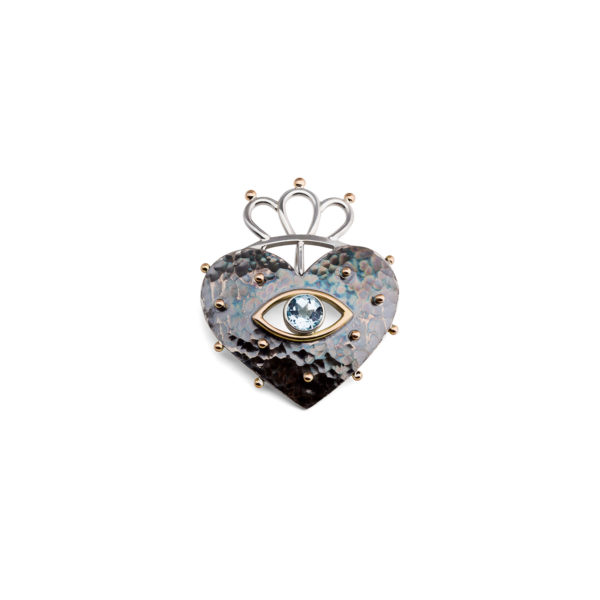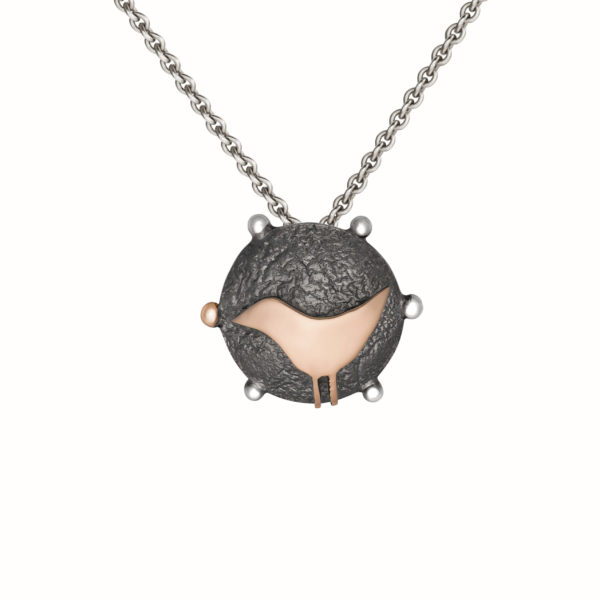Silver Tarnishing – (Un)Wanted Coloration
Are your silver pieces of jewelry oxidized and no longer eye-catching?
Or on the other hand is your silver ring or bracelet leaving a dark or green imprint on your finger/arm?
Or maybe, on the other hand, you want your dark jewelry to retain its shade?
HERE’S SOME POTENTIAL
REASONS AND SOLUTIONS:
Silver becomes dark in the active presence of hydrogen sulfide (sulfur), a substance that happens naturally all around, especially in urban environments. At the point when silver comes into contact with it, a synthetic response happens and a dark layer starts to develop.
The silver is actually combining with sulfur and thus creating silver sulfide. Silver sulfide is dark. At the point when a slender covering of silver sulfide structures on the outer layer of silver, it obscures the silver.
That is the discoloration that we call ‘tarnish.’ Silver oxidizes quicker in places with a great deal of light and high levels of moisture in the air. So don’t be surprised when our “clean” looking jewelry suddenly darkens when you go on holiday to the sea, to a SPA, or to a humid sunny area.
Other than that, the normal oils that your skin produces can likewise respond to your silver adornments: we’re each different, using different cosmetics, oils, creams, consuming different foods, etc.
The degree to which the silver responds with these substances from your skin is exceptionally subject to the kind of food you eat, liquor utilization and regardless of whether you are taking specific prescription medications. These things impact the PH levels of your skin, which can cause a response.
Likewise sweat (which happens to contain ammonia) raises the acidity of the skin and could therefore tarnish your silver jewelry.
There is truth to the claims that silver is a disinfectant, antibacterial noble metal – before these properties were valued to a high degree – used for tableware, utensils, even personal hygiene items that were crafted from silver.
That silver adornments that turn dark would be made of a less silver substance or even be no silver, is erroneous and a completely fake machination or fantasy. The oxidation of silver jewelry is an indication that it is truly silver!
EXISTING REMEDIES:
There are various different ways to eliminate the unwanted silver sulfide when it has already formed on your jewelry.
One way is to take it away from the surface using a scrubbing or polishing solution. It is a convenient liquid gloss and “blackness” remover. It is often packaged in a convenient plastic container that has a “basket” to put the jewelry in before it is immersed in the liquid. Wait a few moments – and your jewelry will shine again.
Clearly, the better method to get rid of the stains on your jewelry is to turn around the response that is made to the tarnish-inducing chemicals, and save your silver! A great alternative to eliminate the stain from your silver adornments can be found in this short blogpost by Prof. Ted Beyer.
THIS CAUSES A
CHEMICAL REACTION:

Silver surfaces can also be cleaned with suitable wipes. In this way, only the raised ornaments, or planes, will be cleaned, and the depth will remain oxidized – if that is the idea that highlights the composition of the jewelry, the napkin is very suitable for that.
If you have a valuable, antique, original item inlaid with stones or pearls (mother of pearl, etc.), their discoloration will be best solved by a knowledgeable jeweler who will have the necessary tools for that purpose.
Organic materials (pearls, amber, wood, etc.) cannot be cleaned with chemicals unless the cleaners are specifically designed for such materials.
THE BEAUTY OF
DARKENED SILVER
Dark, black or even color-stained silver is incredibly beautiful! It has all its “character”, uniqueness and true nature – to change, to react, to be sensitive.
Therefore, designers use these qualities wisely in their works, carefully combining textures, surfaces and shapes of jewelry so that by blackening the silver, their work becomes even more beautiful.
After all, shiny ornaments, handmade textures, polished smooth planes become even more pronounced in contrast to a black, dark background.
We at YURGA very often combine darkened and polished silver, and our jewelry is thought out and created in such a way that by blackening the depth and background (or part of the jewelry), the polished and shiny details become even more visible.
Often it is enough to just blacken a regular polished silver piece of jewelry and it will become a completely different, new, special thing!
“An item touched everyday will shine as much as you’ve loved it”
says our designer Jurga Lago, as jewelry lying in a drawer, hidden from all eyes and the world – like a shimmering star – fades, loses its shine, oxidizes.
Silver needs our attention!
TO BLACKEN YOUR SILVER:
USE A SPECIAL DARKENER:
(Often including potassium thiosulfate, potassium polysulfide, and potassium sulfide). You can buy it as a gel and add a touch of it to heated water. Afterwards, insert your silver adornments into it until it’s the shading you desire. Try not to leave the jewelry in the solution for excessively long, since the oxidation might gain a patchy, unpleasant look. Read the product’s instructions, do not blacken jewelry that is inlaid with precious stones, organic materials or decorated with textiles.
USE LUSTER GEL:
“Brilliance Gel” is quite a new item in this market, that is purposefully designed and intended to change how your silver pieces look. It can oxidize them, however it can likewise be utilized to color the silver in numerous different tones. Painting it, in a way. Just select the shading you desire (the gel can be bought in an assortment of shades) and follow the instructions on the packaging.
GO TO THE SEASIDE, HOT SPRING OR SPA:
In a humid, warm, sunny environment, the jewelry blackens itself, all you have to do is polish its raised details, ornamentation and desired planes. The high sulfur content of these humid regions (and their surrounding air) will uniformly oxidize anything made of silver.
UTILIZE BOILED EGGS:
Yes, yes, this may sound odd, but boiled eggs can likewise oxidize your silver. By boiling them and crushing the eggs into small pieces afterwards it causes a release of sulfur, which will oxidize your silver adornments when you put them alongside the crushed up eggs. It is recommended to do this in a special container, like a tupperware or plastic baggie. Simply leaving the object you wish to oxidize is enough, however you might need to do so for a considerable length of time – the more it keeps in touch with the eggs, the more oxidized it will get, however it won’t happen in an instant, the oxidation will spread unevenly.
At YURGA we have several silver cleaners – dry surface cleaning wipes and a special liquid for cleaning silver. You can buy them in our physical locations, or in the online store.


 Lietuviškai
Lietuviškai Español
Español




